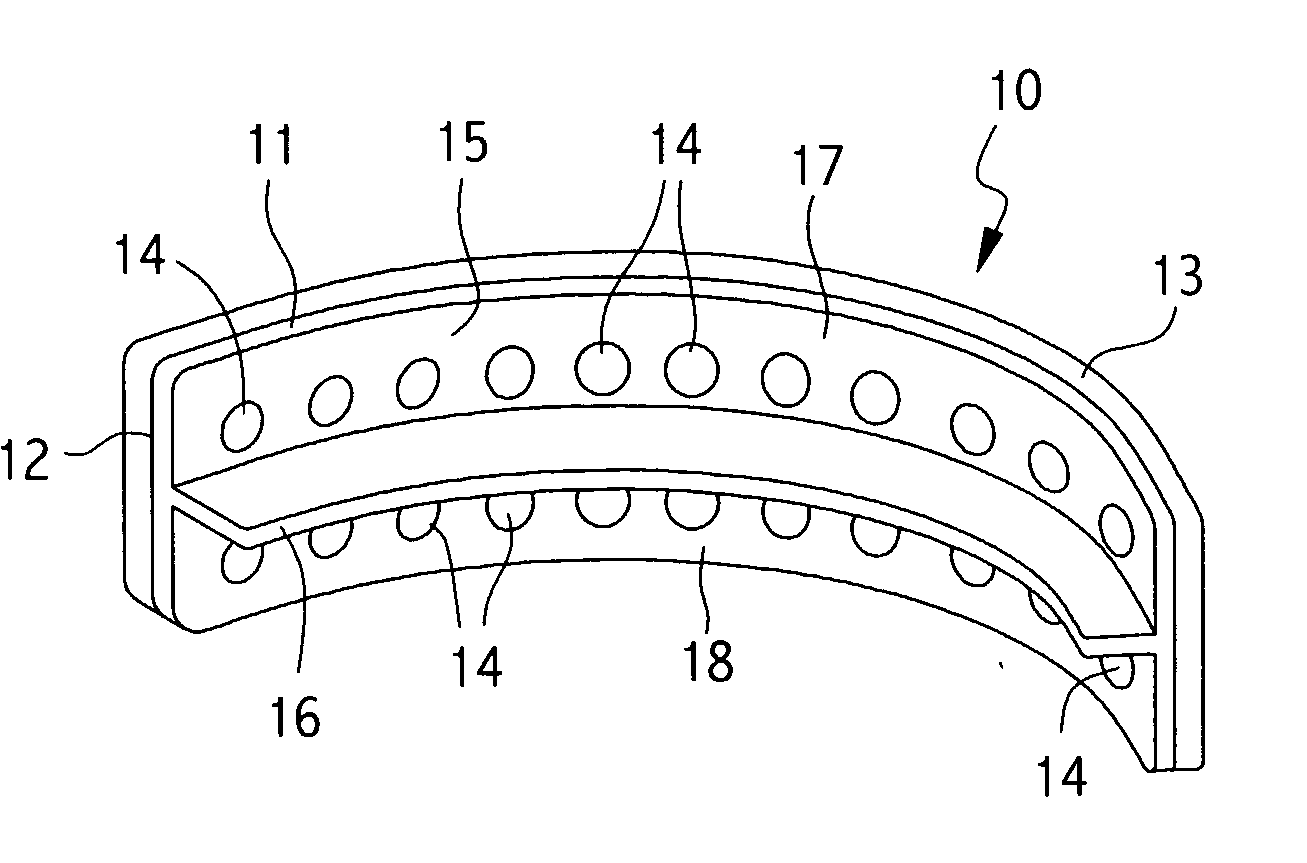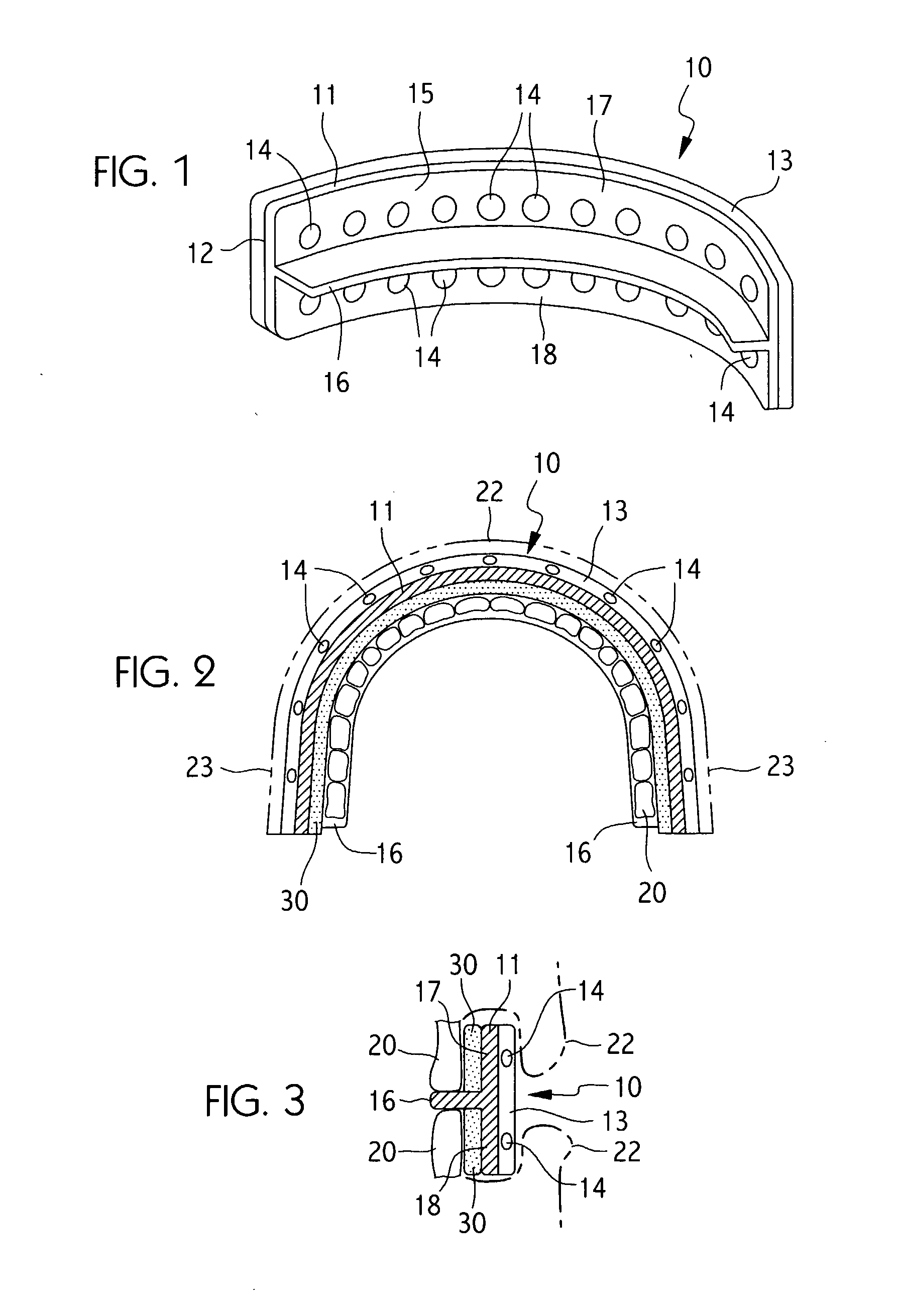Tooth Whitening Lens with Bite Plate
a technology of tooth whitening and lens, which is applied in the field of tooth whitening devices and methods, can solve the problems of irreversible pulpitis, loss of calcium from tooth enamel, damage to pulp tissue, etc., and achieves the effects of rapid whitening teeth, easy use, and low cos
- Summary
- Abstract
- Description
- Claims
- Application Information
AI Technical Summary
Benefits of technology
Problems solved by technology
Method used
Image
Examples
Embodiment Construction
[0014] While the following description details the preferred embodiments of the present invention, it is to be understood that the invention is not limited in its application to the details of construction and arrangement of the parts illustrated in the accompanying drawings, since the invention is capable of other embodiments and of being practiced in various ways.
[0015]FIG. 1 illustrates the tooth whitening device 10 of the present invention. Lens 11 is curved to fit the curvature of the arch formed by the teeth. On the outside surface 12 of lens 11 a casing 13 is attached which houses a plurality of light emitting diodes (LEDs) 14. On the inside surface 15 of lens 11 is a bite plate 16 which bisects lens 11 into an upper portion 17 which contacts the upper teeth and a lower portion 18 which contacts the lower teeth. FIG. 2 shows a diagramactic cross-sectional top view of tooth whitening device 10 positioned in the mouth of a user. Upper teeth 20 bite down on bite plate 16 fixing...
PUM
 Login to View More
Login to View More Abstract
Description
Claims
Application Information
 Login to View More
Login to View More - R&D
- Intellectual Property
- Life Sciences
- Materials
- Tech Scout
- Unparalleled Data Quality
- Higher Quality Content
- 60% Fewer Hallucinations
Browse by: Latest US Patents, China's latest patents, Technical Efficacy Thesaurus, Application Domain, Technology Topic, Popular Technical Reports.
© 2025 PatSnap. All rights reserved.Legal|Privacy policy|Modern Slavery Act Transparency Statement|Sitemap|About US| Contact US: help@patsnap.com


